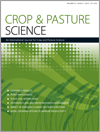CP18604Seed priming in field crops: potential benefits, adoption and challenges
 , Muhammad Usman, Faisal Nadeem, Hafeez ur Rehman, Abdul Wahid, Shahzad M. A. Basra and Kadambot H. M. Siddique
, Muhammad Usman, Faisal Nadeem, Hafeez ur Rehman, Abdul Wahid, Shahzad M. A. Basra and Kadambot H. M. Siddique
Seed priming is a presowing technique in which seeds are moderately hydrated to the point where pregermination metabolic processes begin without actual germination. It is a simple and effective approach for improving stand establishment, economic yields and tolerance to biotic and abiotic stresses in various crops. However, it reduces the longevity of high-vigour seeds and improves the longevity of low-vigour seeds. Seed priming techniques are also effective for micronutrient delivery at planting in field crops.




